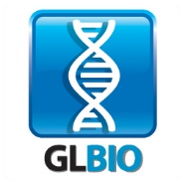Posters
Preparing your Poster - Information and Poster Size
Poster Schedule
Print your poster in Chicago
Poster Categories
View Posters By Category
Session A: (July 7 and July 8) | Session B: (July 9 and July 10) |
|---|---|
Short Abstract: Myeloid malignancies, especially myelodysplastic syndromes (MDS) are often treated with the DNA methyltransferase inhibitor, 5-azacytidine (5-Aza), but with variable response rates. To determine factors predicting response, we single-cell bisfulite sequenced the stem cell fraction (CD34+CD38-Lin-) of bone marrow from five patients treated with 5-Aza. By examining methylation within DNA binding ChIP-seq footprints, we were able to find DNA binding proteins (especially CTCF and cohesins) that may provide a signature for future diagnostic prediction of 5-Aza response. Functional analysis of these differentially methylated regions showed changes in enhancers and super-enhancers that regulate normal hematopoeisis as well as cell growth and proliferation. Accompanying single-cell immunophenotypic data from index-sorting shows a distinct CD34(bright)CD99(bright)CD45RA- signature for responders. Future work with a larger cohort will help to validate these candidate immunophenotypic and epigenetic predictors of 5-Aza response.
Short Abstract: Granatum is an online scRNA-Seq analysis platform offering biologists the access to the latest methods developed in the bioinformatics community, especially for those without programming experience. Its rich feature and friendly interface has earned its recent popularity (over 1,000 unique users within 6 months of publication). Building upon this success and taking in users’ feedback, we here present Granatum X: the next generation scRNA-Seq analysis platform. The new core/plugin architecture of Granatum X allows for easy incorporation of modules developed by the bioinformatics community. The new flexible pipeline structure enables customization of workflows. The new containerization solution of Granatum X with Gboxes allows its deployment on the cloud, HPC, or private servers seamlessly. With these significant design upgrades, we anticipate Granatum X to become a community engaging, flexible, evolving software eco-environment for scRNA-Seq analysis, which connects programming developers and end users.
Short Abstract: Current treatment of patients with hematological disorders including cancers such as leukemia and lymphoma involves transplantation of Haematopoietic Stem Cells (HSCs). However shortage of donors and issues with immunological compatibility often restrict the possibility to perform this treatment. The inability to generate HSCs in vitro for clinical use could be explain by our lack of understanding of the molecular process that governs the emergence of HSCs. HSCs emerge during a narrow developmental window that still remains poorly understood notably because the molecular mechanisms underlying this process have mostly been studied at the population level. To further characterise the molecular regulators during HSCs emergence, we undertook single cell sequencing and inferred the developmental trajectory using a Bayesian Gaussian Process Latent Variable Model (GPLVM). Our trajectory inference indicates the cells form a sequential population along the development trajectory suggesting a continuum giving rise to HSCs. In addition we extended the trajectory inference model to a 2D latent space to identify potential branching events, as implemented within the GrandPrix package (Ahmed et al., BioArxiv 2017) which provides a scalable implementation of the Bayesian GPLVM for pseudotime inference.
Short Abstract: Cancer stem cells (CSC) are characterized by the dual capacity of either self-renewal or differentiation to other cell types. They are often resistant to anti-cancer treatments and become the cellular source of relapse or metastasis. With the advent of high-throughput technologies such as Drop-seq, which make it possible to capture the expression profiles of thousands of cells, it may be possible to identify rare cell populations like CSCs. In this project, we analyze ten breast cancer cell lines at the single-cell level, seeking to understand the heterogeneity among these cultured cells and whether some cells could resemble CSCs. We propose to exploit prior knowledge of transcription factors (TF) and their target genes. We leverage these known interactions to estimate the likely gene activity of individual transcription factors by summing the expression levels of its downstream targets. The resulting score, based on the expression of all its target genes, could be a more accurate indicator of activity than the observed expression level of the TF per se. This approach essentially transformed the original data for individual genes into aggregate data for individual TFs. We used this method to identify clusters of cells and found some TF-based profiles across multiple cell lines.
Short Abstract: Single-cell transcriptomic assays have enabled the de novo reconstruction of lineage differentiation trajectories, along with the characterization of cellular heterogeneity and state transitions. Several methods have been developed for reconstructing developmental trajectories from single-cell transcriptomic data, but efforts on analyzing single-cell epigenomic data and on trajectory visualization remain limited. Here we present STREAM (Single-cell Trajectories Reconstruction, Exploration And Mapping), an interactive pipeline capable of disentangling and visualizing complex branching trajectories from both single-cell transcriptomic and epigenomic data. STREAM has four innovations compared to other existing methods: 1) a novel density-level trajectory visualization useful to study subpopulation composition and cell-fate genes along branching trajectories, 2) a documented end-to-end pipeline to reconstruct trajectories from chromatin-accessibility data, 3) the first interactive database focused on single-cell trajectory visualization for several published studies ,and 4) a trajectory mapping procedure to readily map new cells to precomputed structures without pooling data and re- computing trajectories. This last innovation allows facile analysis of data from genomic perturbation studies or to assign cancer cells to a normal developmental trajectory. STREAM is available as a user-friendly interactive website at http://stream.pinellolab.org/ .
Short Abstract: scRNA-seq enables detailed profiling of heterogeneous cell populations to reveal lineage relationships or discover new cell types. Due to lower read coverage/tag counts, often limited number of sampled cells and other dataset specific variations in scRNA-seq data, there has been little success directed towards developing computational methods for cross-dataset analysis of multiple single-cell populations. We introduce a method of variance-driven multitask clustering of single-cell RNA-seq data (scVDMC) that utilizes multiple single-cell populations from biological replicates or different samples. scVDMC clusters single cells in multiple scRNA-seq experiments of similar cell types and markers but varying expression patterns such that the scRNA-seq data are better integrated than typical pooled analyses which only increase the sample size. By controlling the variance among the cell clusters within each dataset and across all the datasets, scVDMC detects cell sub-populations in each individual experiment with shared cell-type markers but varying cluster centers among all the experiments. Applied to three real scRNA-seq/droplet-based datasets, scVDMC more accurately detected cell populations and known cell markers than other recent scRNA-seq clustering methods. In the case study on an in-house Recessive Dystrophic Epidermolysis Bullosa scRNA-seq data, scVDMC revealed several new cell types and unknown markers validated by flow cytometry.
Short Abstract: In recent years, the well-known Infinite Sites Assumption (ISA) has been a fundamental feature of computational methods devised for reconstructing tumor phylogenies and inferring cancer progressions seen as an accumulation of mutations. However, recent studies leveraging Single-cell Sequencing (SCS) techniques have shown evidence of the widespread recurrence and, especially, loss of mutations in several tumor samples. Still, established methods that can infer phylogenies with mutation losses are however lacking. We present the SASC (Simulated Annealing Single-Cell inference) tool which is a new and robust approach based on simulated annealing for the inference of cancer progression from SCS data. More precisely, we introduce a simple extension of the model of evolution where mutations are only accumulated, by allowing also a limited amount of back mutations in the evolutionary history of the tumor: the Dollo-k model. We demonstrate that SASC achieves high levels of accuracy when tested on both simulated and real data sets and in comparison with some other available methods. The Simulated Annealing Single-cell inference (SASC) tool is open source and available at https://github.com/sciccolella/sasc.
Short Abstract: Intraductal papillary mucinous neoplasms (IPMNs) are precursors to pancreatic cancer, however, little is known about genetic heterogeneity in these lesions. In this study, we identify somatic mutations in single neoplastic cells from fresh IPMN tissue from surgical resections and provide new insights into the clonal structure of these precursor lesions. In each single cell, whole genome amplification, followed by targeted next generation sequencing of pancreatic driver genes, was performed. A novel custom analysis pipeline was developed to determine single-cell genotypes by leveraging information jointly from multiple samples. The pipeline integrates features of current single-cell, somatic mutation, and multi-sample callers. Our analyses revealed that different mutations in the same driver gene frequently occur in unique tumor clones within the same IPMN, suggesting the possibility of polyclonal origin or an unidentified initiating event preceding this critical mutation. Multiple mutations in later-occurring driver genes were also common and frequently localized to unique tumor clones, raising the possibility of convergent evolution of these genetic events in pancreatic tumorigenesis. In conclusion, analysis of single-cell sequencing of IPMNs demonstrated genetic heterogeneity with respect to early and late occurring driver gene mutations, suggesting a more complex pattern of tumor evolution than previously appreciated in these lesions.
Short Abstract: Resolving tumor heterogeneity is a crucial step in understanding cancer development and evolution but it is hampered by limits in available data sources. Bulk sequence has become available in large quantities but permits only a coarse-grained view of heterogeneity through genomic deconvolution. Single-cell sequencing has been revolutionary in resolving fine-scale heterogeneity but is not yet practical on the scales needed for population-level studies. Here, we examine new strategies for combining bulk and limited amounts of single-cell data to gain the advantages of single-cell resolution with much lower cost. We specifically focus on the problem of deconvolving copy number data from bulk samples assisted by single-cell data. We develop a basic mixed membership model formulation to balance deconvolution of bulk data with quality of fit to limited numbers of single-cell samples. We then develop a coordinate descent algorithm to reconstruct virtual single-cell deconvolutions of the bulk data. We demonstrate the effectiveness of the methods on semi-simulated and real data in providing enhanced deconvolution accuracy relative to bulk data alone.
Short Abstract: As part of an investigation of intra-tumoral heterogeneity(ITH) in HCC liver cancer we initiated a pilot study which multi-regionally sampled 14 patients and harvested 79 tumor biopsies, along with matched adjacent normal samples. Twelve patients were analyzed using bulk omics to obtain readouts of HLA allele specific expression, neo-antigen calling from somatic mutations, and TCR profiling using VDJ sequencing. Immune editing was observed in the neo-antigen landscape with subclonal mutations recruiting the dominant TIL response, which suggestively correlated with clinically observed clonal de-differentiation. To further investigate these signals and deconvolve impurity and cell-type confounders, we examined the remaining two patients (7 biopsies) with 10X Chromium sc-RNA-seq. We show that constructing HCC-cell only co-expression networks enriched in the binding motif of key transcription factors ('regulons'), and then binarizing the activity of these networks in each cell, reveals that such regulons are remarkably regionally specifically distributed among the cancer cells. This implies that the molecular scale of HCC clonal evolution in terms of downstream expression reprogramming is strongly regionally specific and potentially suggests interesting bounds on the molecular emergence of phenotypic ITH as a function of clonal evolution.












